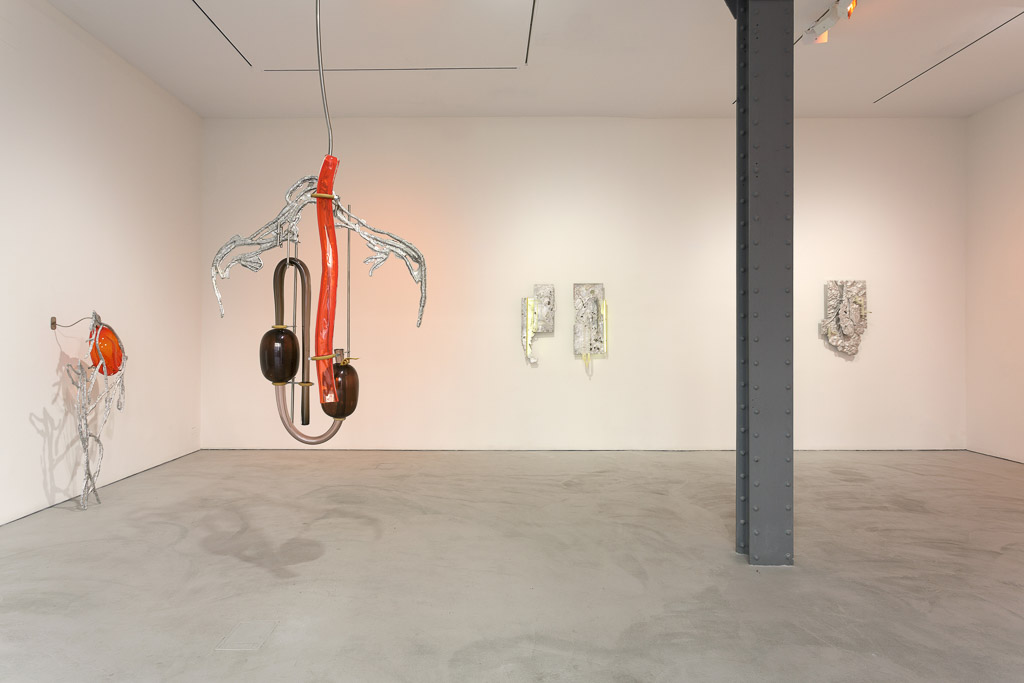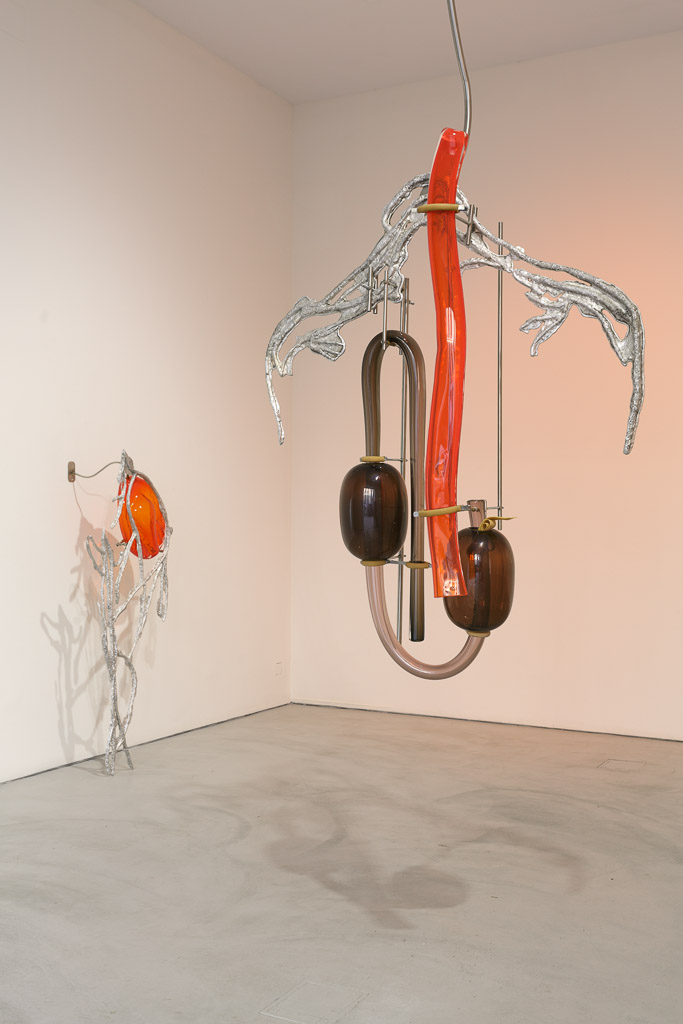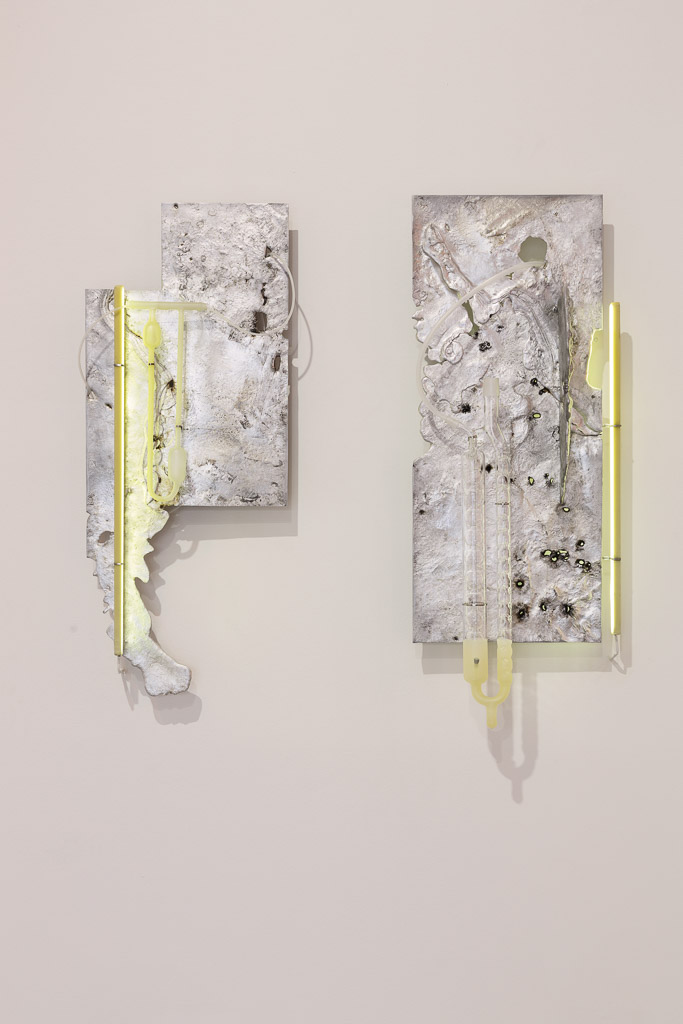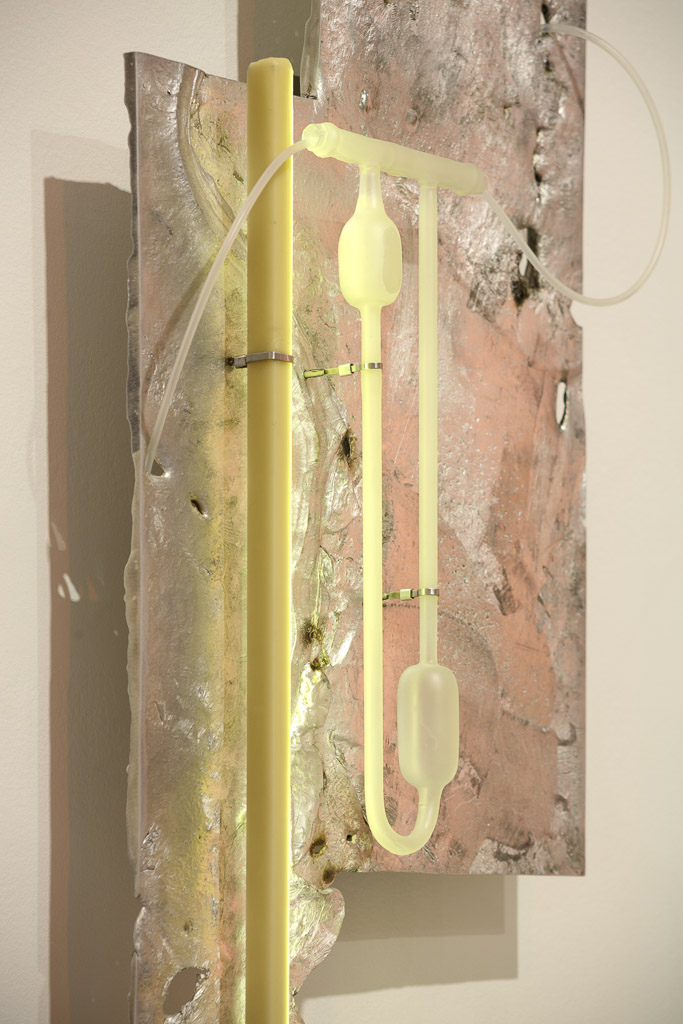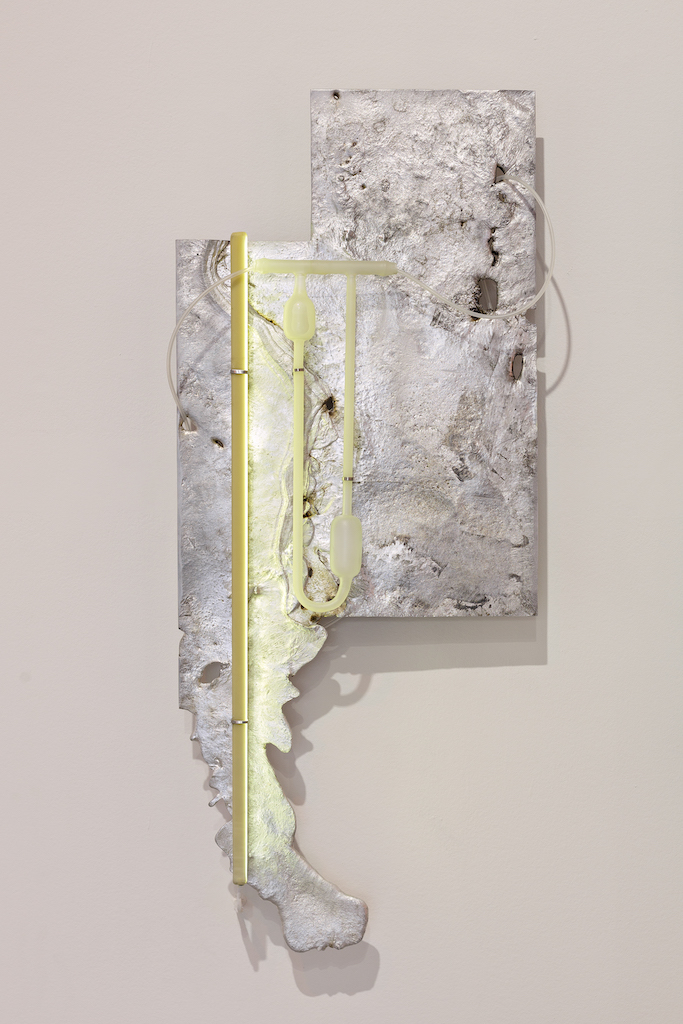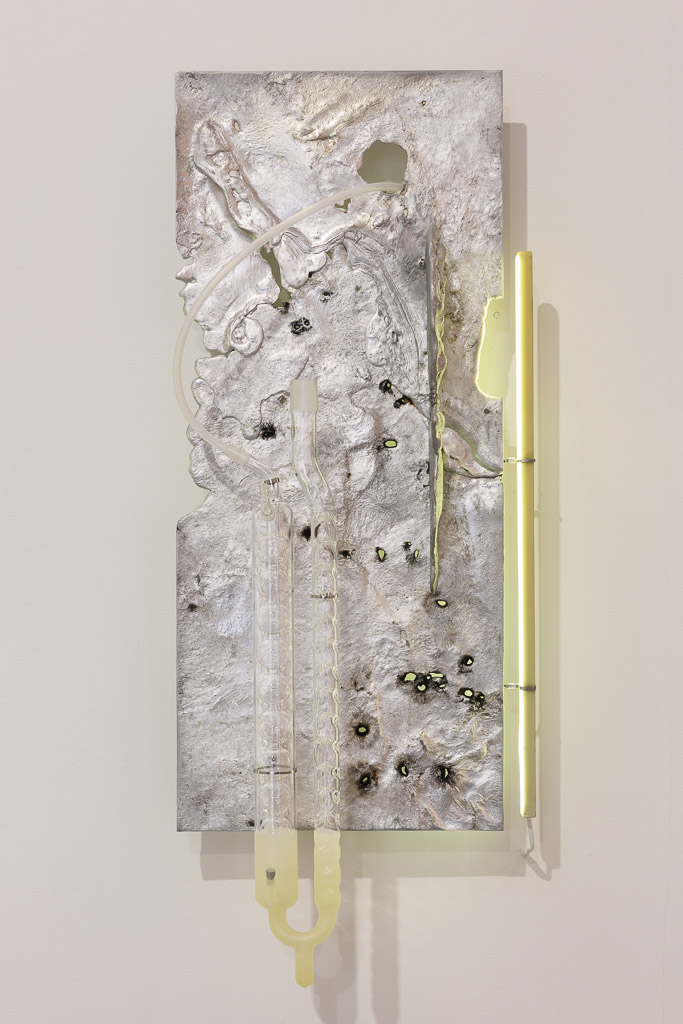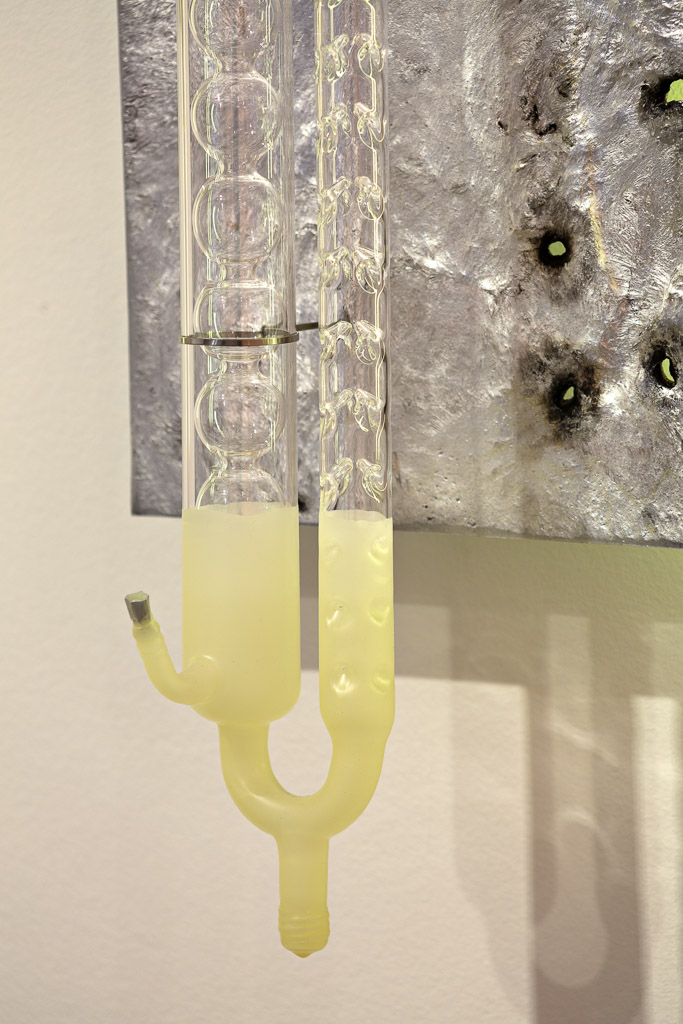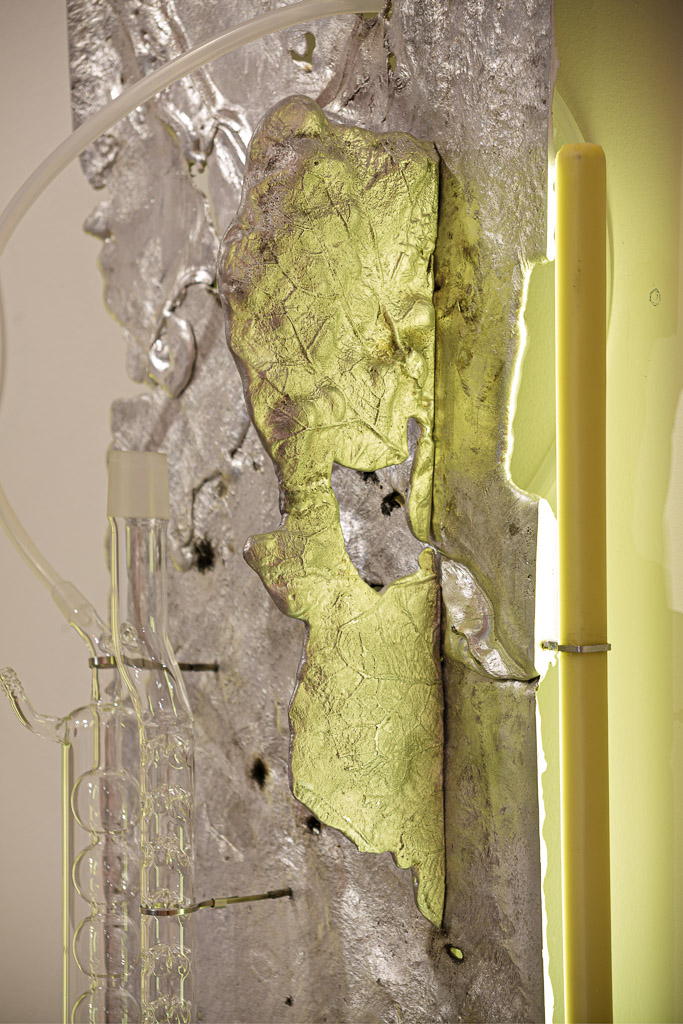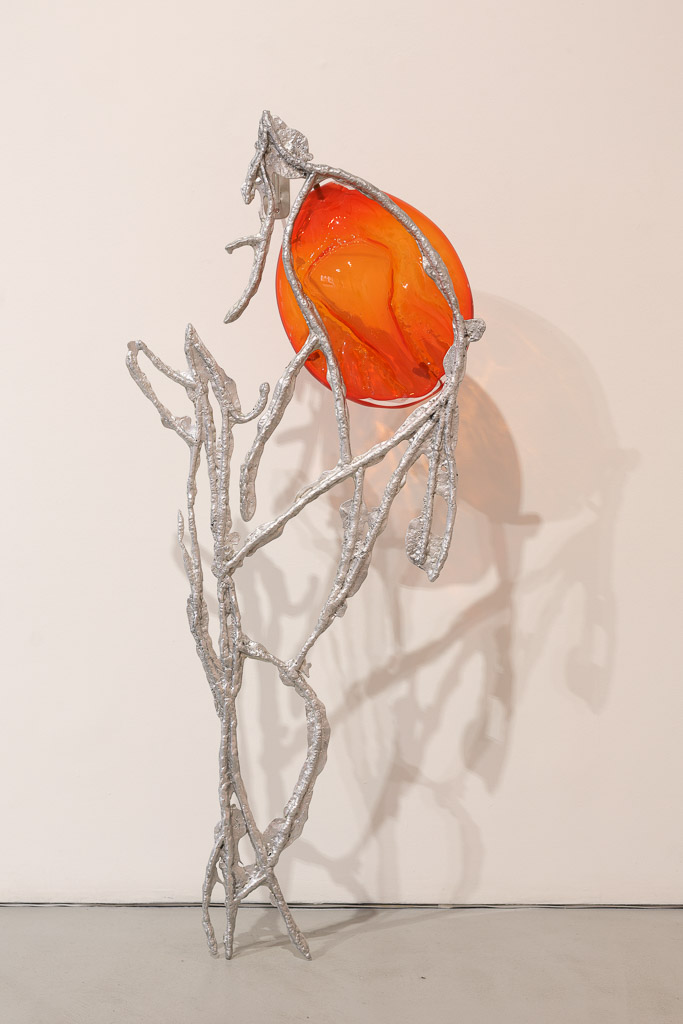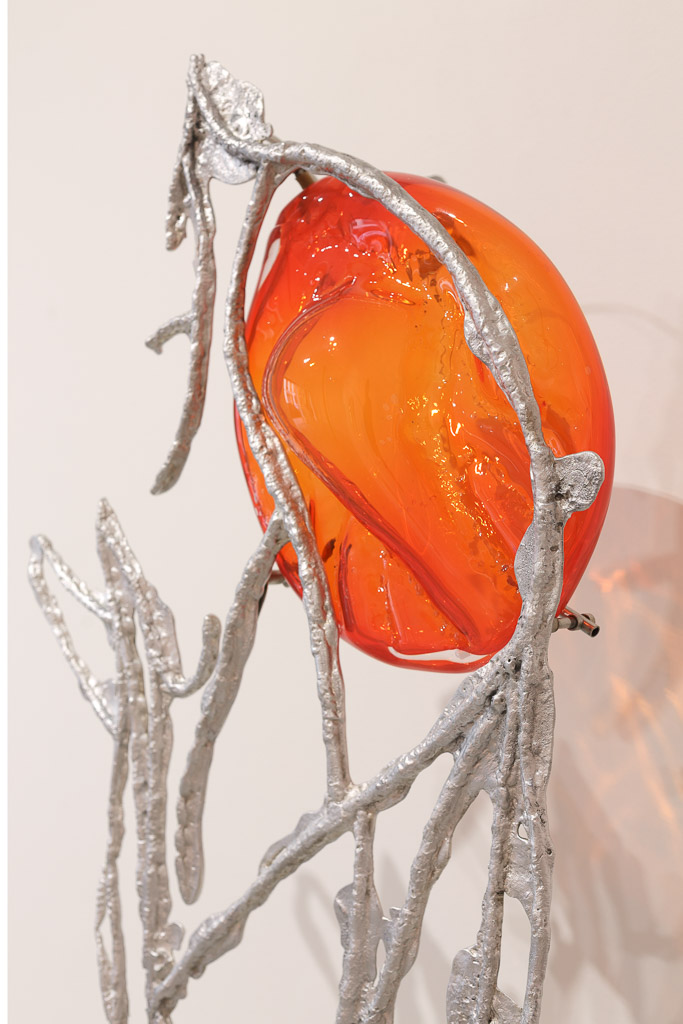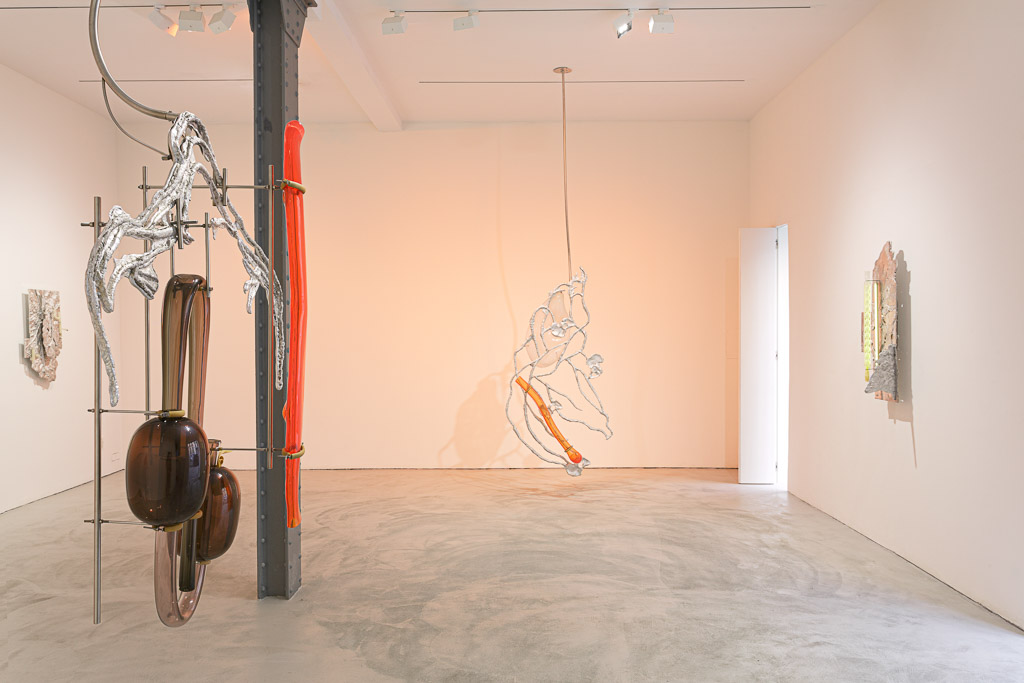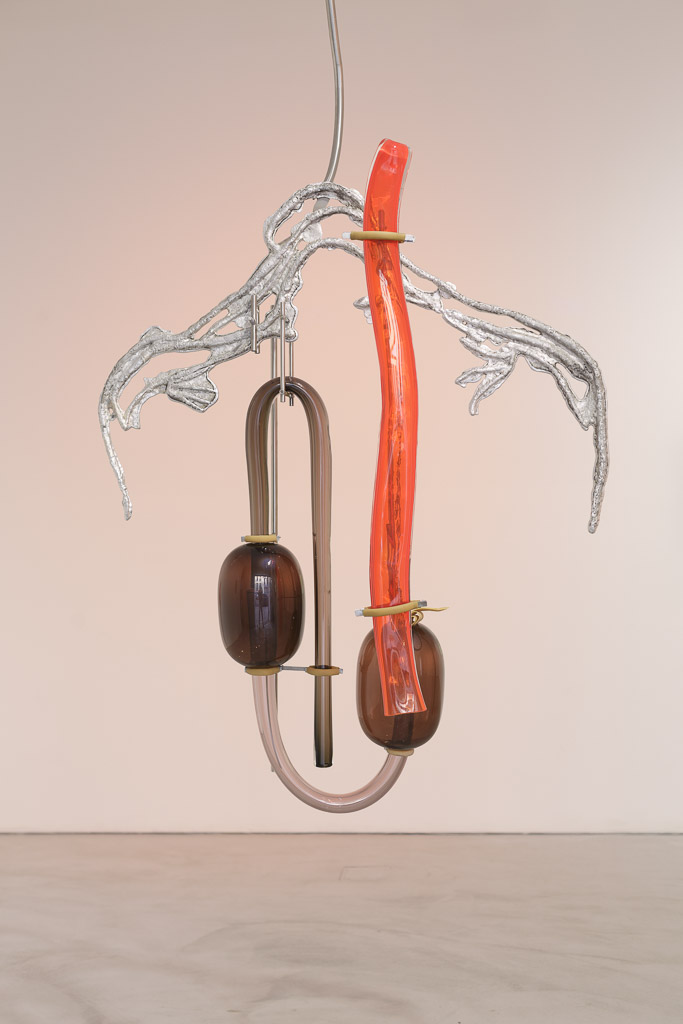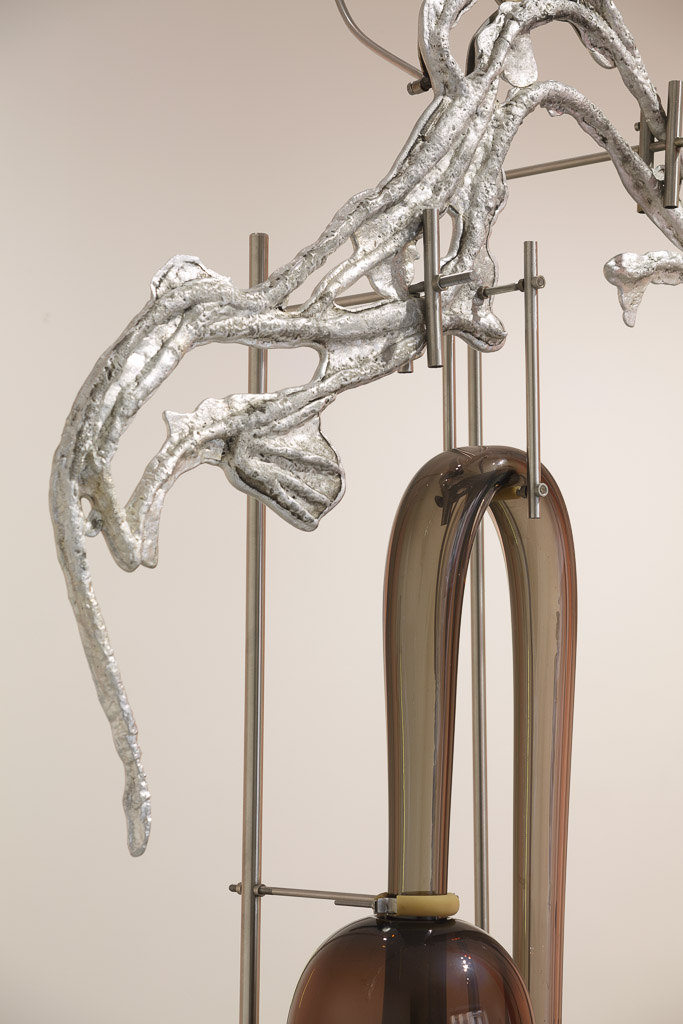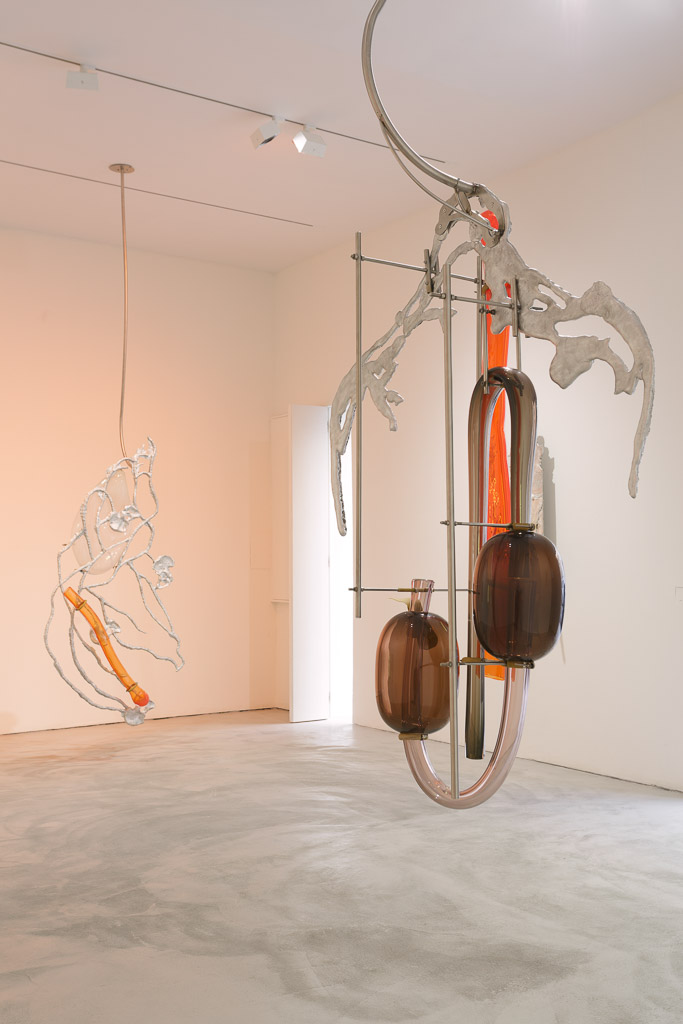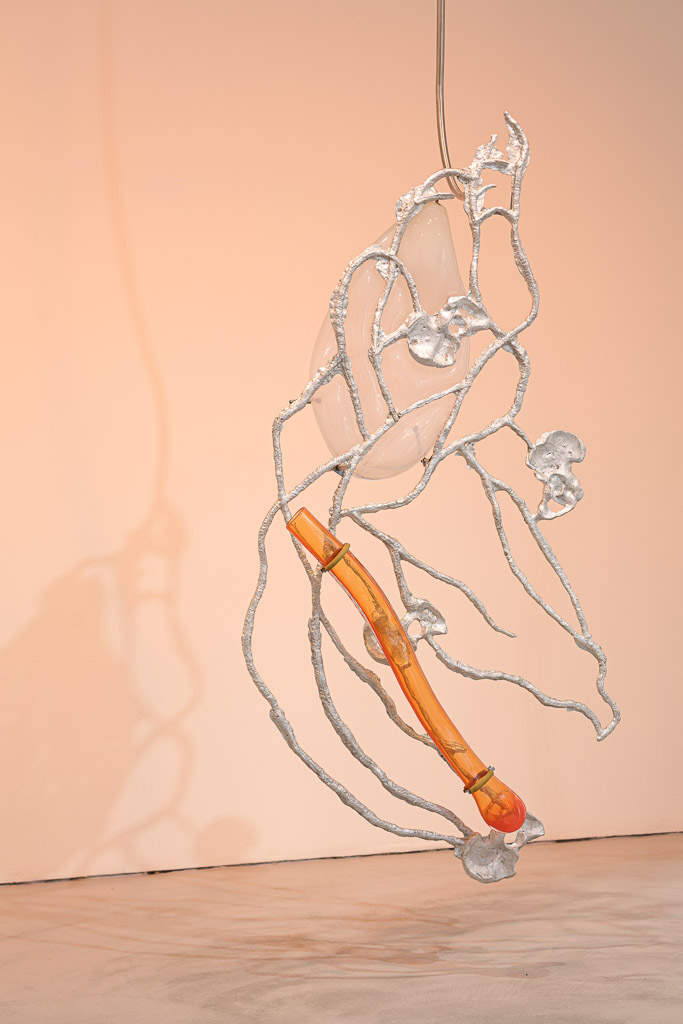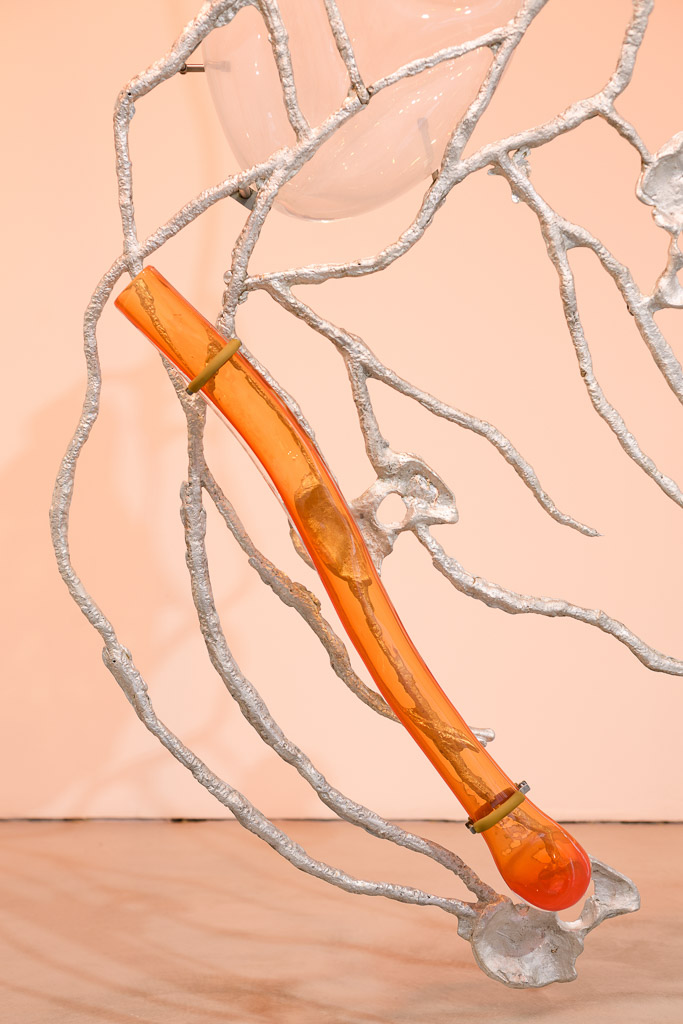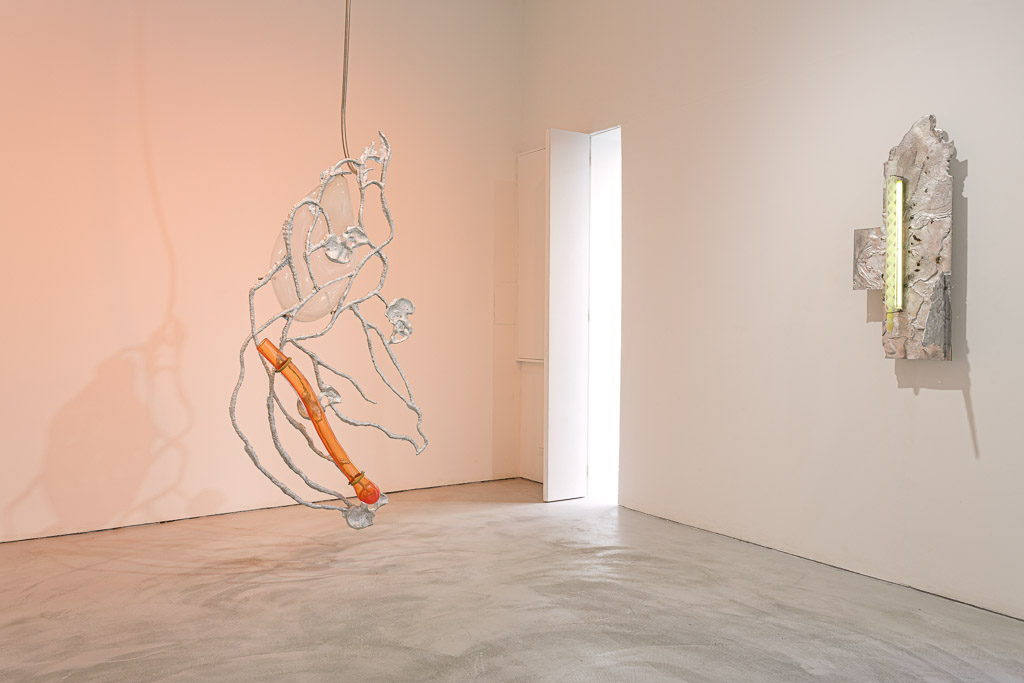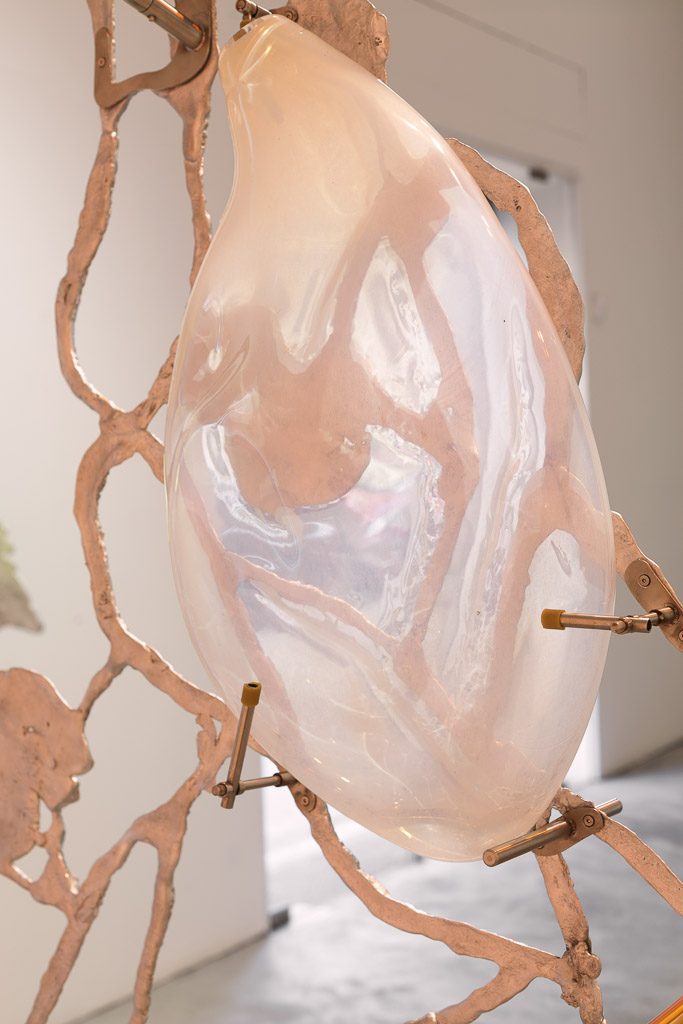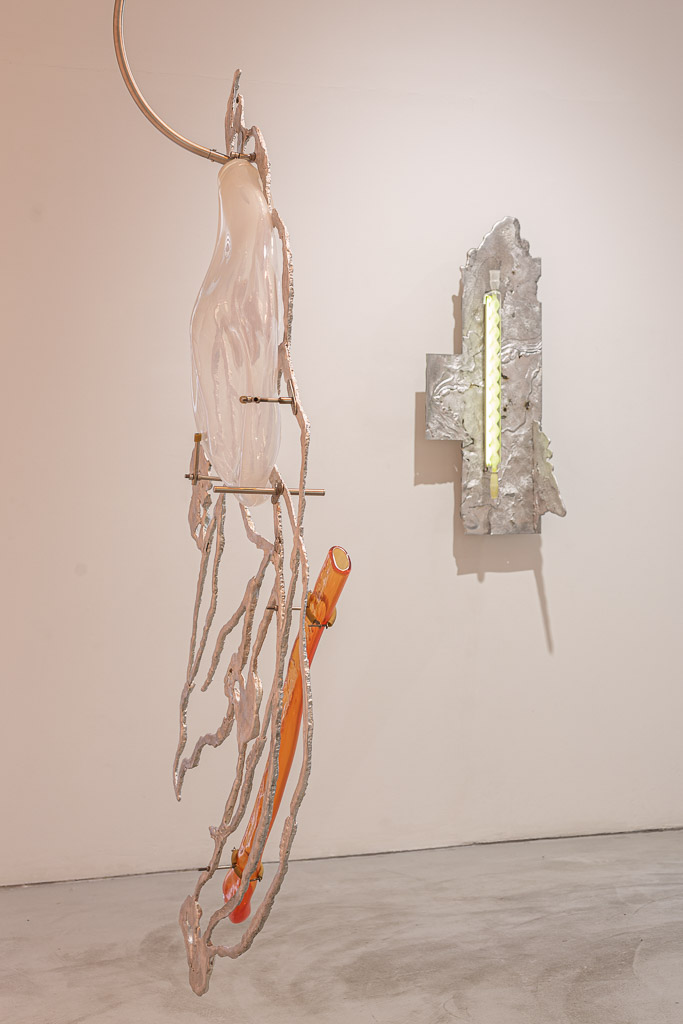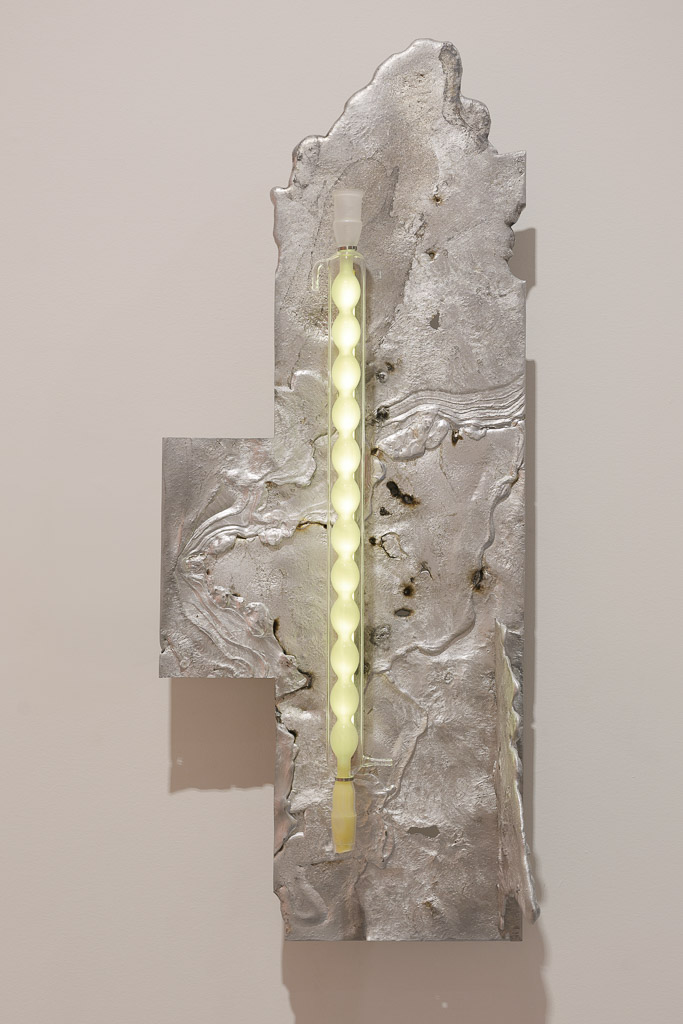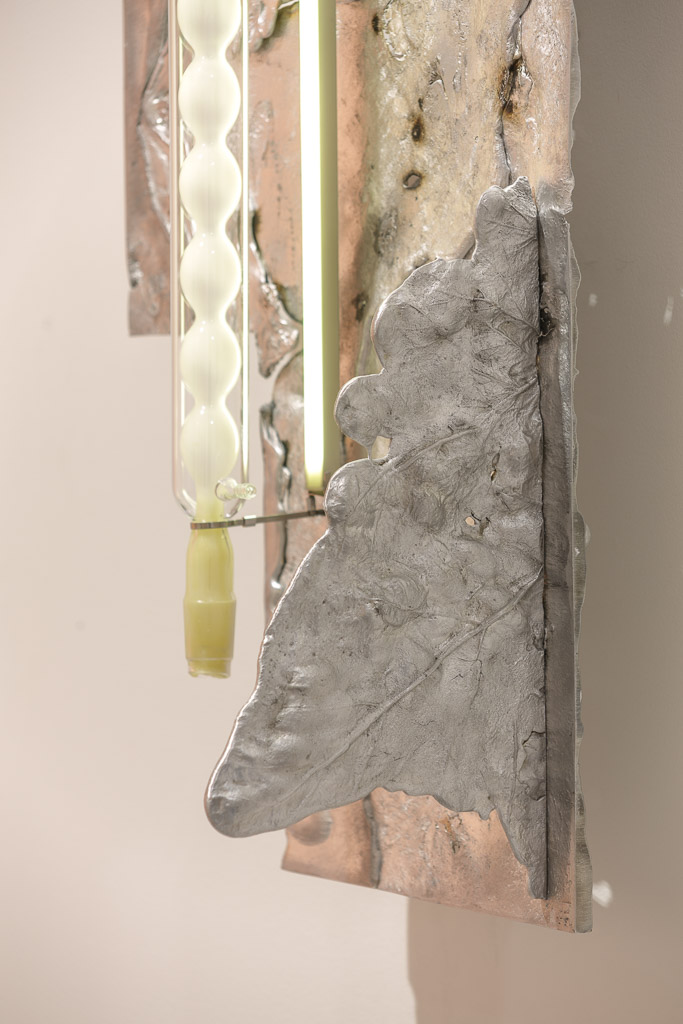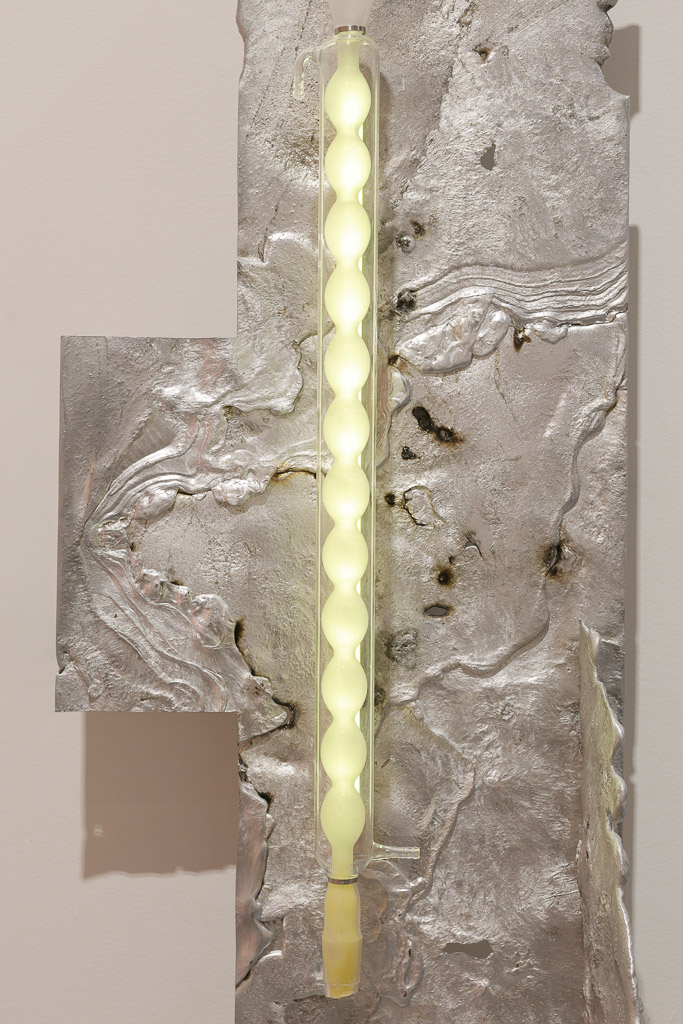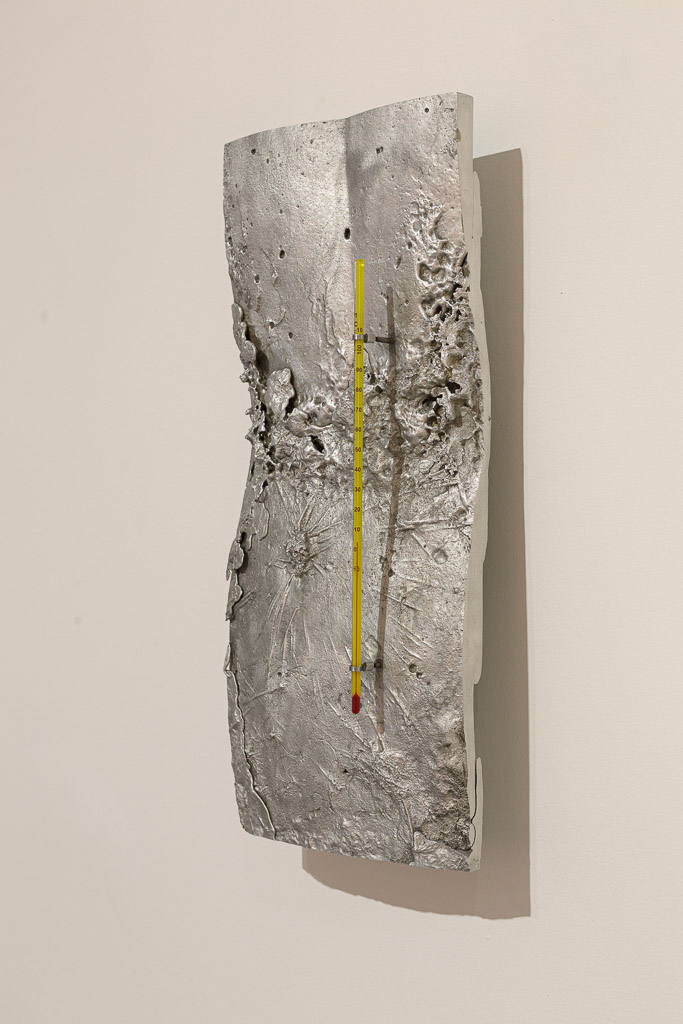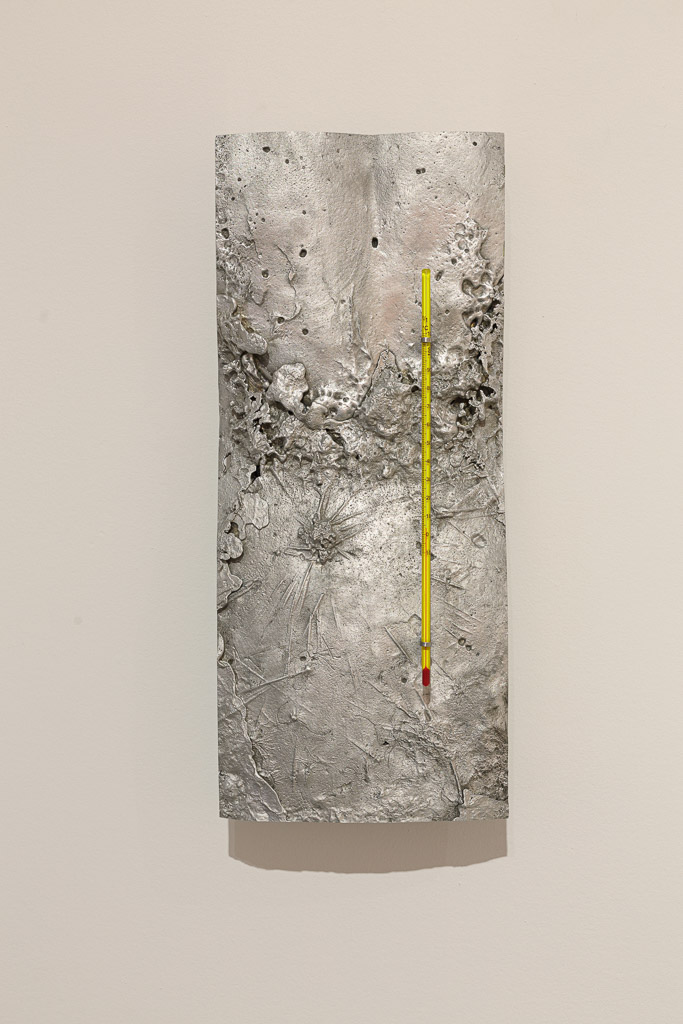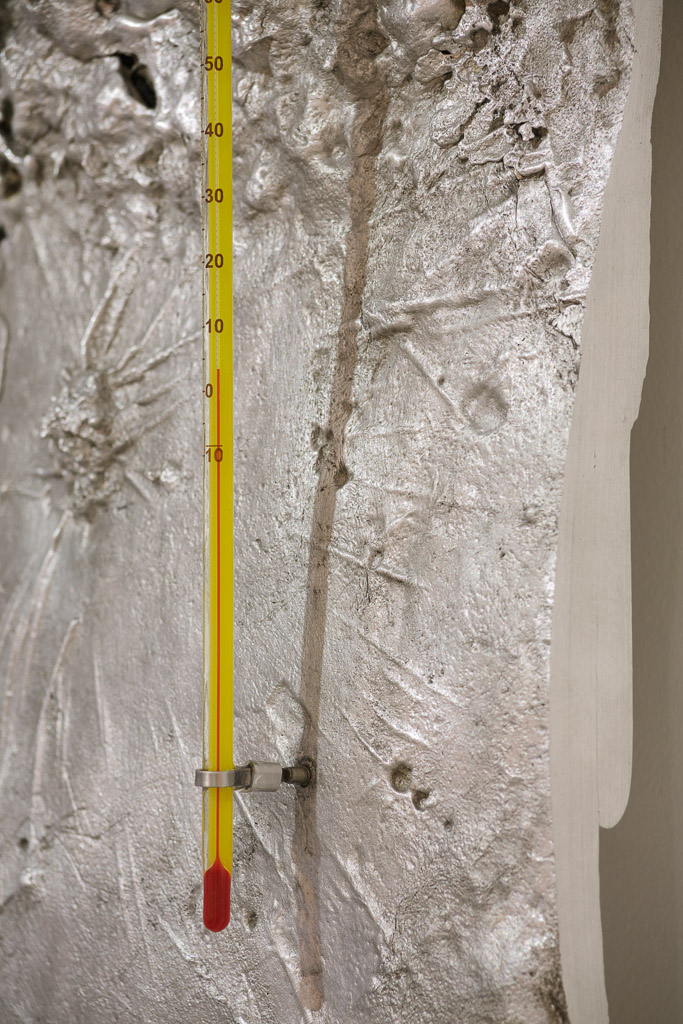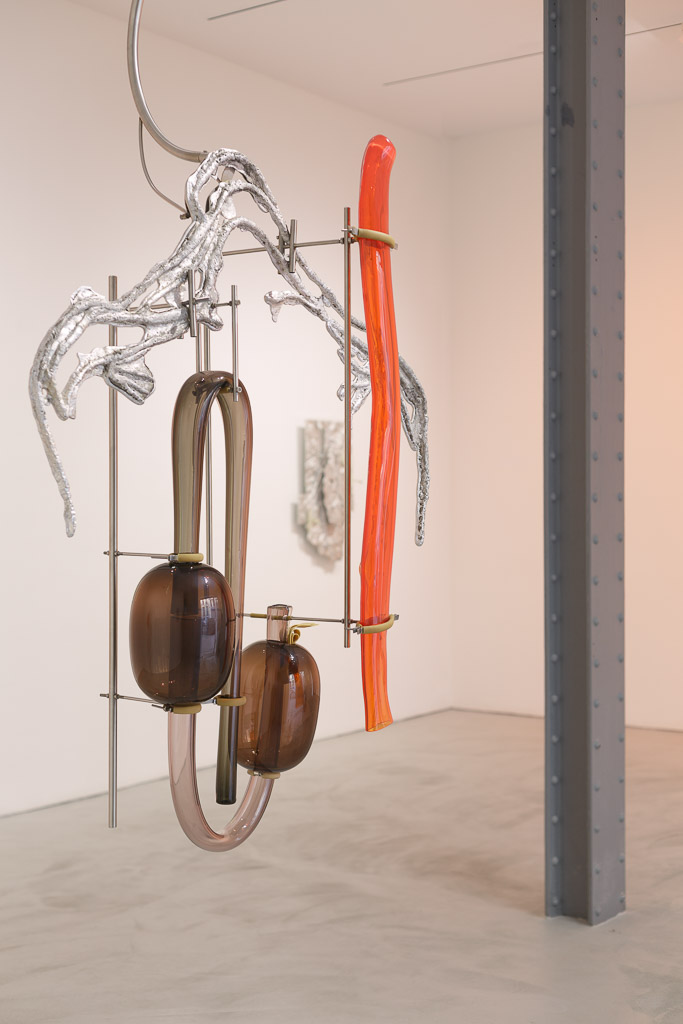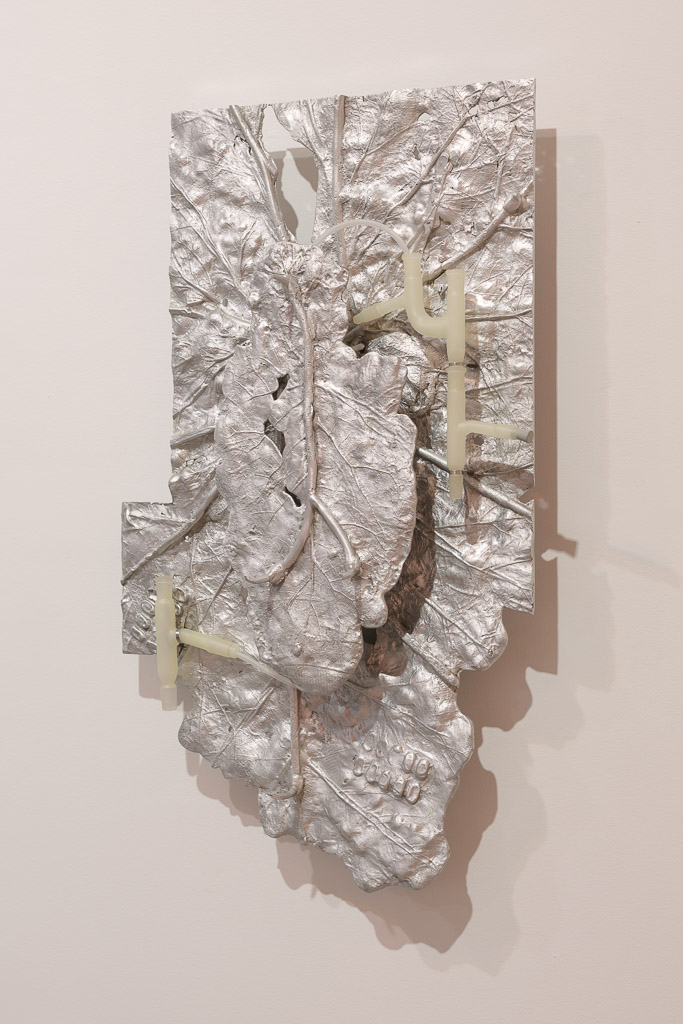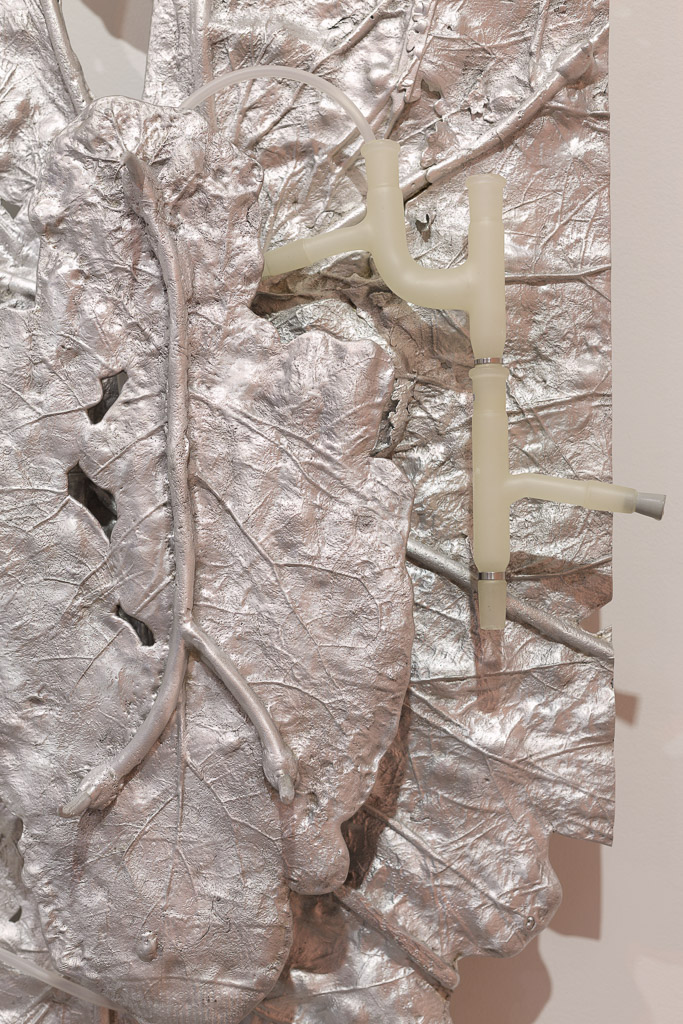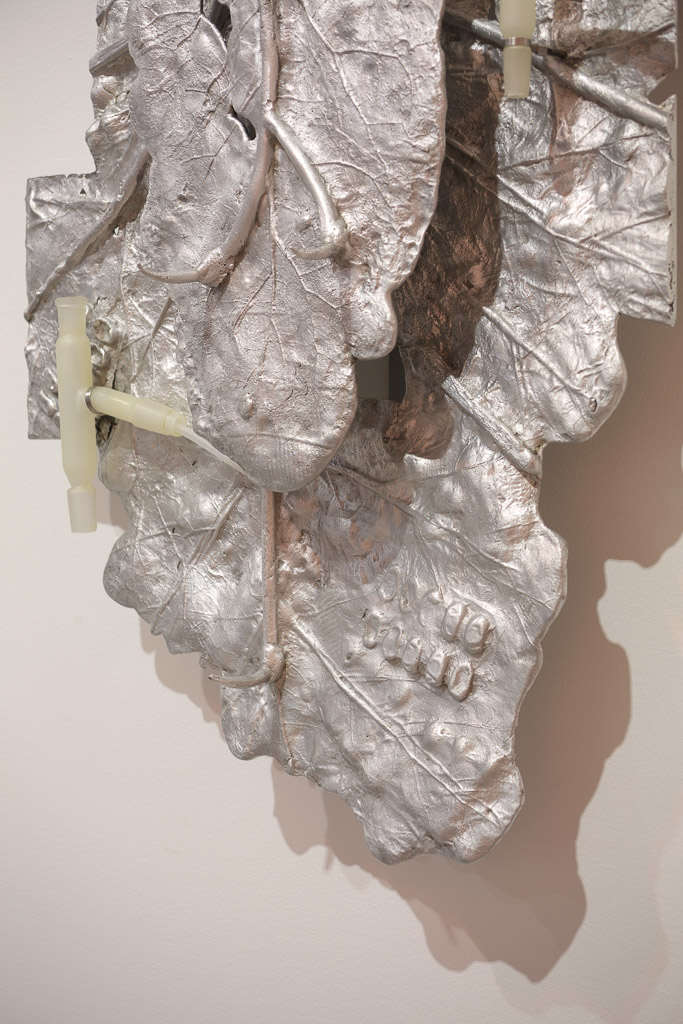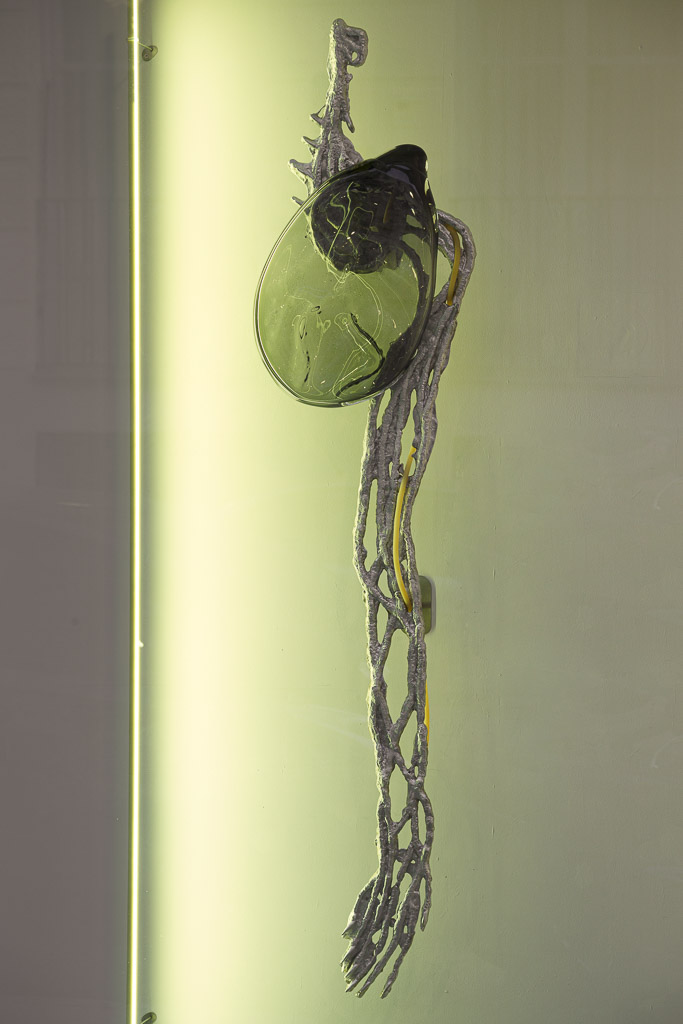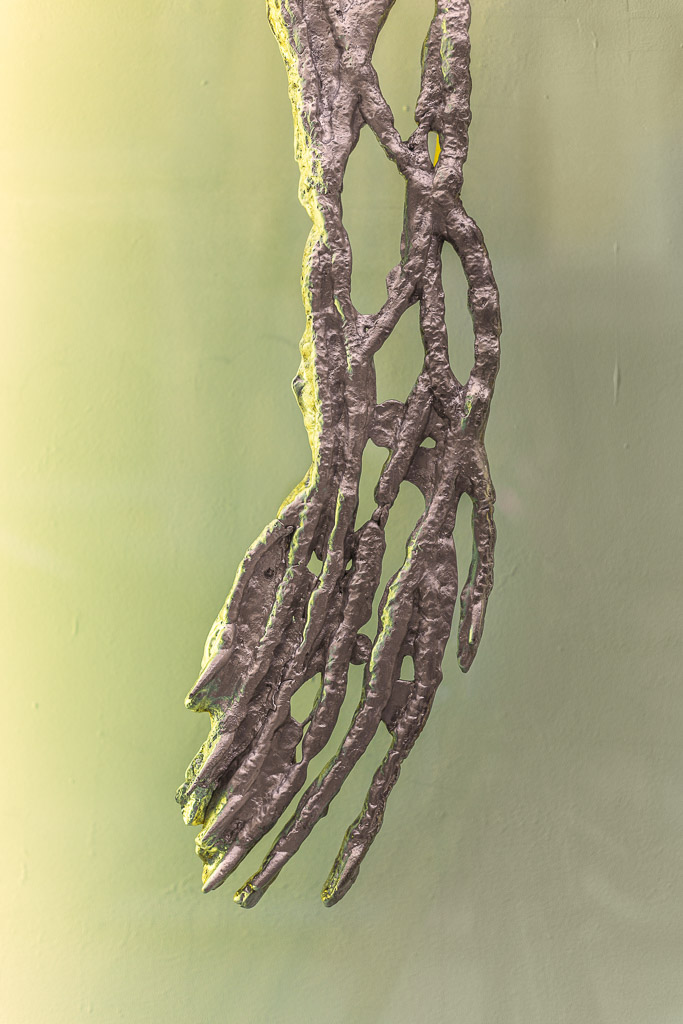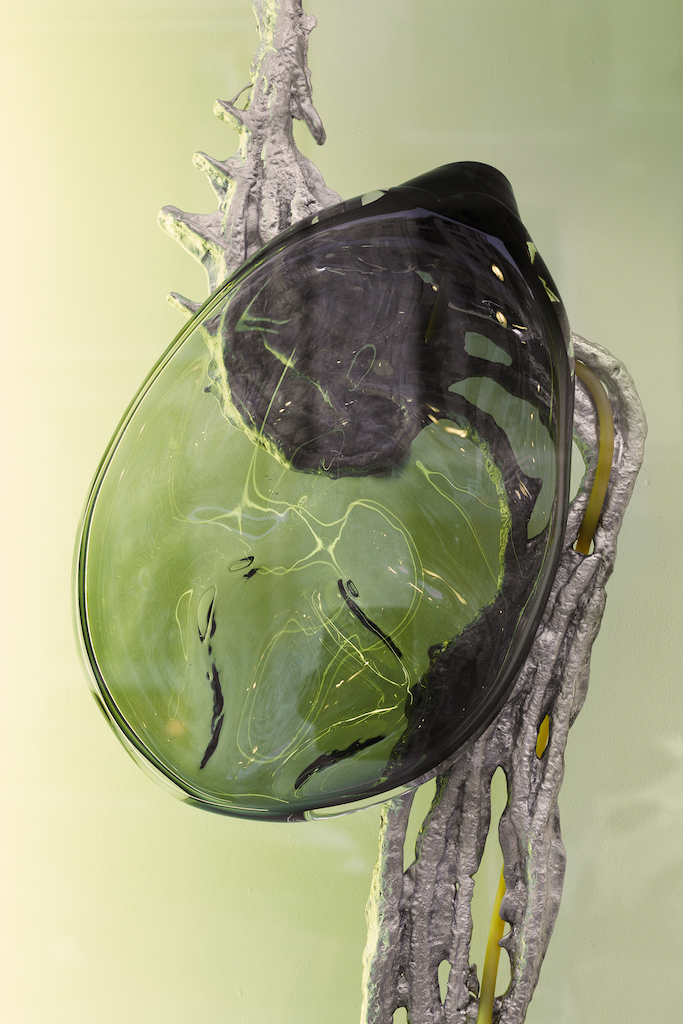Artist: Pakui Hardware
Exhibition title: THE BURN
Venue: Carlier | Gebauer, Madrid
Dates: 26.01 – 02.03.2024
Photography: Pakui Hardware / Carlier | Gebauer
Pakui Hardware’s signature aesthetics, wide theoretical network and material experiments create unexpected ecosystems and life-forms. Looking at the relationship between contemporary technology, economy and bodily transformations, over the last few years the duo’s lenses has focused on contemporary medicine and its diverse ways of altering, monitoring and fragmenting bodies. In their installations, Pakui Hardware redefine established boundaries of the natural and artificial in an attempt to reimagine a metamorphic body in constant becoming.
THE BURN weaves together human and vegetal bodies, politics and medicine by presenting two new series of sculptures - Inflammation (2024) and Heat Treated (2024). Inflammation is part of a larger body of sculptures that are currently on view in the solo installation under the same title at the Lithuanian National Museum of Art. These spatial drawings made of casted aluminium, that carry ‘hot-spots’ of ‘inflammations’ made of glass, depict fragments of enlarged or recomposed human nervous systems. According to the authors of Inflamed. Deep Medicine & the Anatomy of Injustice, Rupa Marya and Raj Patel, inflammation is an ancient and natural bodily response to unhealthy conditions that are both contemporary and historical - created by oppression and trauma. Chronic inflammation is often the result of historical injustice as well as social and economic hardships that is being inscribed into the bodily memory overtime - often failed to recognize by a Western approach to medicine when treating the malfunctioning bodies.
Works from the series Heat Treated tell of other painful and poorly healing burns evoked by giant Sosnowsky’s hogweed upon human and animal skin. All parts of Sosnowsky weed contain intense phototoxic allergen, thus even small drops of plant’s juice cause photosensitivy and watery blisters. The plant was once common only in the Caucasus area, but under Stalin’s rule it was started to be used as a fodder, which, due to the plant’s highly invasive character, allowed it to quickly spread in many areas of Ukraine, Russia, Poland and the Baltic States. A brute political decision created a form of botanical colonialism. The wall-based pieces resemble fossils from the future - yet to be uncovered - hiding imprints of Sosnowsky’s hogweed, medical instruments, pills and industrial materials, behind the surface. The surface which itself seems to still be in motion, hot lava of aluminum turned into a glowing metal skin.
The burns may be physical, may be historical. Yet the scars are here to stay.
Materials: Casted aluminium, glass, rubber, bees wax, LED light, stainless steel
